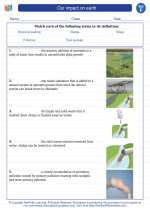Storms
Introduction to Storms
Storms are natural phenomena characterized by strong winds, heavy rainfall, thunder, and lightning. They can occur in various forms, such as hurricanes, tornadoes, thunderstorms, and blizzards. These extreme weather events can be destructive and have significant impacts on the environment and human populations.
Types of Storms
Hurricanes
Hurricanes are large, powerful storms that form over warm ocean waters. They are characterized by strong winds and heavy rainfall, and can cause widespread damage to coastal areas.
Tornadoes
Tornadoes are violent windstorms characterized by a twisting, funnel-shaped cloud. They can cause massive destruction in a very short period of time and are often accompanied by severe thunderstorms.
Thunderstorms
Thunderstorms are small, localized storms that produce lightning and thunder. They can also bring heavy rainfall, strong winds, and hail, and are often associated with rapid changes in weather conditions.
Blizzards
Blizzards are severe snowstorms characterized by strong winds, low temperatures, and reduced visibility due to blowing snow. They can result in snowdrifts, power outages, and dangerous travel conditions.
Formation and Causes
Storms are typically formed due to the interaction of various atmospheric conditions, such as temperature gradients, humidity, and air pressure. For example, hurricanes are formed over warm ocean waters, while tornadoes are often associated with severe thunderstorms and certain wind patterns.
Impacts and Safety Precautions
Storms can have significant impacts on human activities, infrastructure, and the environment. It is important to take safety precautions during storms, such as seeking shelter, staying informed through weather alerts, and being prepared with emergency supplies.
Conclusion
Studying storms is essential for understanding natural phenomena and their impacts on the Earth. By learning about different types of storms, their causes, and safety measures, we can better prepare for and respond to these extreme weather events.
[Storms] Related Worksheets and Study Guides:
.◂Science Worksheets and Study Guides Sixth Grade. Our impact on earth
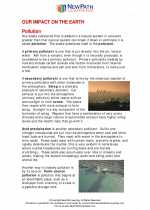
 Worksheet/Answer key
Worksheet/Answer key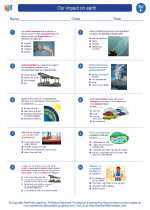
 Worksheet/Answer key
Worksheet/Answer key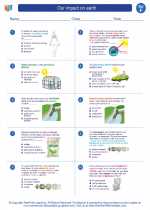
 Worksheet/Answer key
Worksheet/Answer key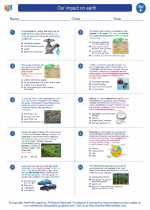
 Vocabulary/Answer key
Vocabulary/Answer key